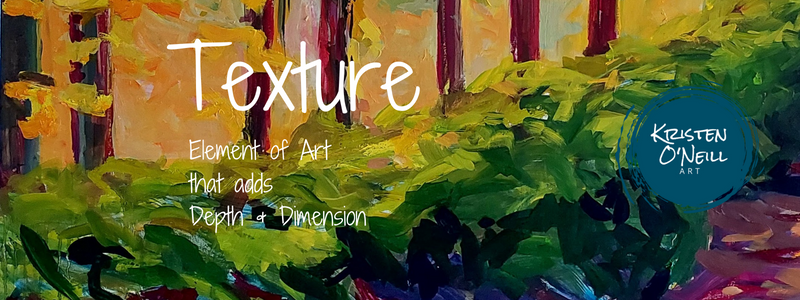Texture is one of the “elements of art” and is often used by artists to add depth and dimension to their works. It can bring a painting to life and make it more engaging for the viewer. In this lesson, we’ll explore what texture is, how it’s used in art, and why it’s an important aspect of creating a painting.
Texture can also be used to evoke certain emotions, such as rough, jagged texture for an expression of anger or rough brushstrokes for a sense of chaos.
What is Texture?
Texture refers to the surface quality of an object or the way it feels to the touch. In painting, texture is created through a variety of techniques, including brush strokes, layering, and the use of different materials. For example, an artist might use thick, textured brushstrokes to create the illusion of fur on a pet portrait, or they might layer different materials to create a textured background in an abstract painting.
Rembrandt is famous for his portrait paintings. Often simple in the colors, the values did a lot of work creating dimension. He also had very detailed textures in his paintings, especially in the earlier years. Look at this detail of a painting he made of his wife. Notice how the thin lines of paint create this lightweight fabric, while nearly the same colors are used to paint the hair with completely different texture.

Rembrandt van Rijn,
Saskia van Uylenburgh, c. 1635, Oil on Panel, Courtesy National Gallery of Art, Washington
Later, Rembrandt paintings brought a loosening up to the brushstrokes, and what I consider, to be one of the first times that a painter is admitting that the painting is made out of paint, instead of trying to hide it. The textures of the brushstrokes are visible, which brings an entirely new layer of information for our eyes to explore.
How to Use Texture in Painting
There are many ways to add texture to a painting, and the technique you choose will depend on the type of painting you’re creating and the desired effect you want to achieve. Here are some popular methods for adding texture to your paintings:
- Brushstrokes: One of the simplest ways to add texture to a painting is through the use of brushstrokes. Experiment with different brushes, such as flat brushes, filbert brushes, or fan brushes, to achieve a variety of textural effects. See this video I made about brushstrokes.
- Layering: Another way to add texture to a painting is through layering. You can layer different materials, such as paint or other mediums, to create a textured surface. You can also layer different textures, such as smooth and rough, to create a sense of depth and dimension. I have several different Pinterest Boards with artists I love. Check these two out with an eye on texture:
-
-
- Pat Steir – oh, waterfalls!
- Lois Dodd – I think of her work as the flat yet juicy handling of paint, and making the everyday astonishing.
-
-
- Materials: You can also add texture to a painting by using different materials. For example, you could add sand, grit, or other textured materials to your paint to create a unique textured surface.
-
- Mediums designed for painting can be expensive, but more reliable for archival reasons. There are different types of mediums. (Links go to Blick and products I have personally used. Bigger descriptions available there.)
- Acrylic:
- Gel Mediums
- Extenders & Flow Enhancers – link to the Golden OPEN one I use a LOT
- Glazing
- Molding & Modeling
- Retarders (Slows drying time)
- Leveling & Pouring
- Textures (oh, hey, texture!)
- Oil Paint
- Cold Wax (hot wax is encaustic). I love this for texture – think Van Gogh!
- Liquin (thinning, speeding up drying time)
- Galkyd (thin & flexible)
- Adding more oil (Linseed, Walnut)
- Acrylic:
- Mediums designed for painting can be expensive, but more reliable for archival reasons. There are different types of mediums. (Links go to Blick and products I have personally used. Bigger descriptions available there.)
-
- Impasto: Impasto is a painting technique where the paint is thickly layered and creates a raised texture on the surface of the painting. This technique is often used in oil paintings to create a sense of depth and dimension. Probably the most famous impasto painter was Vincent Van Gogh.
Texture is an important element of art that can help to bring a painting to life and make it more engaging for the viewer. Whether you’re a beginner or an experienced artist, experimenting with different textures and techniques can help you create dynamic, interesting paintings that capture attention. So, don’t be afraid to get creative and explore different textures in your artwork!



